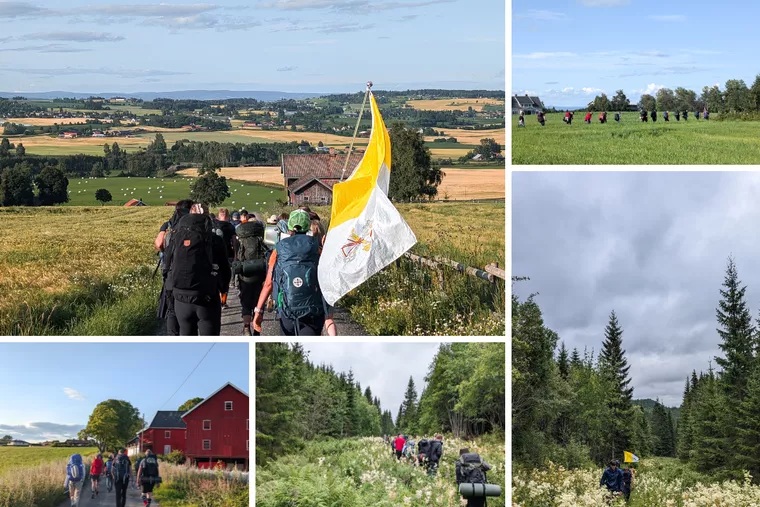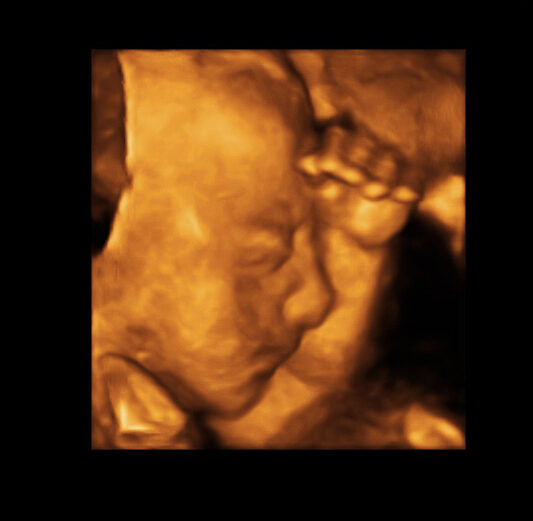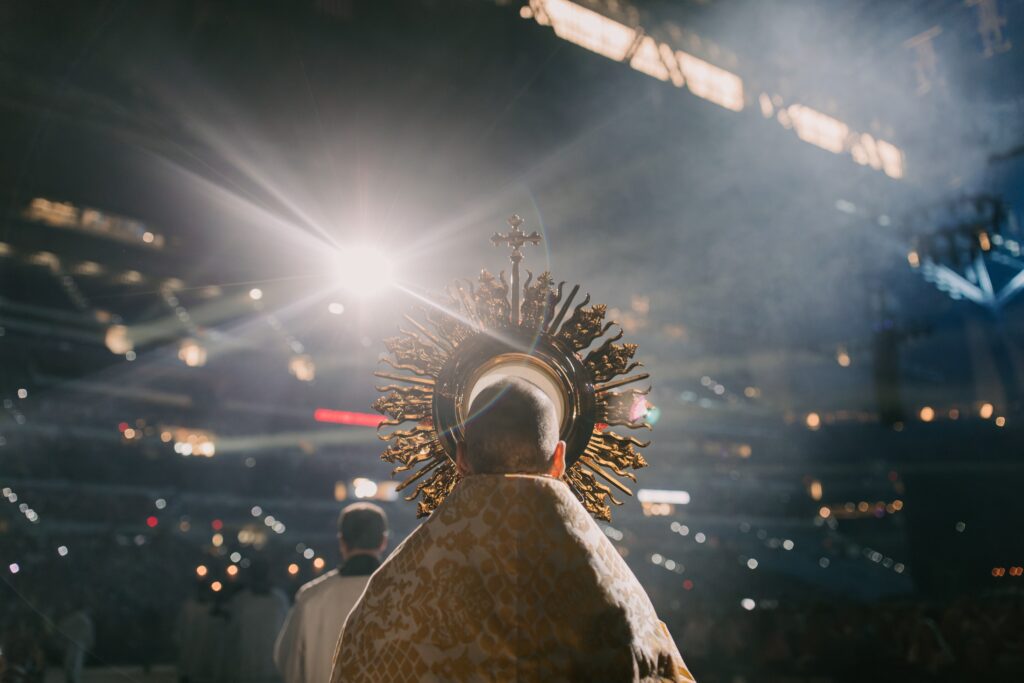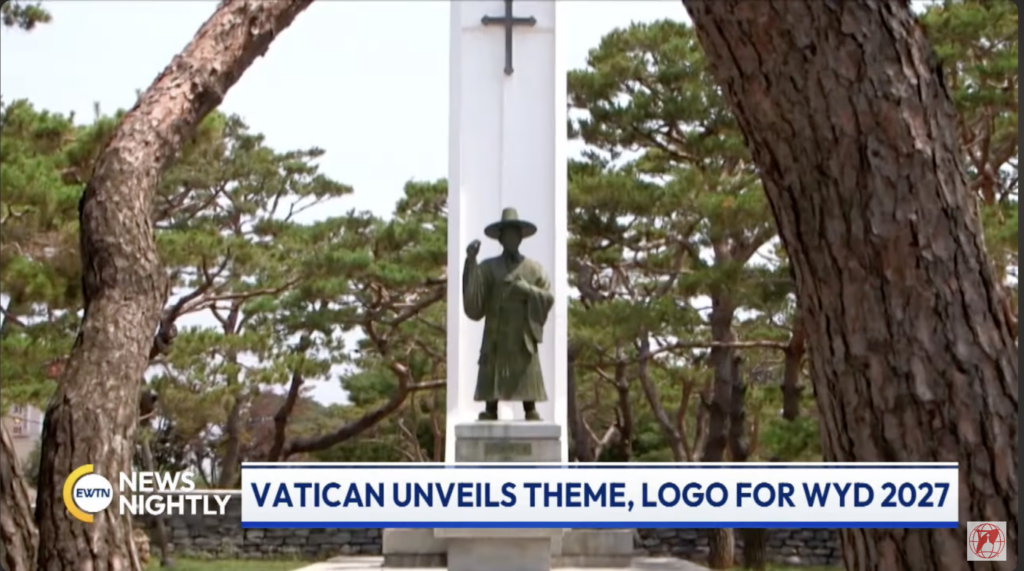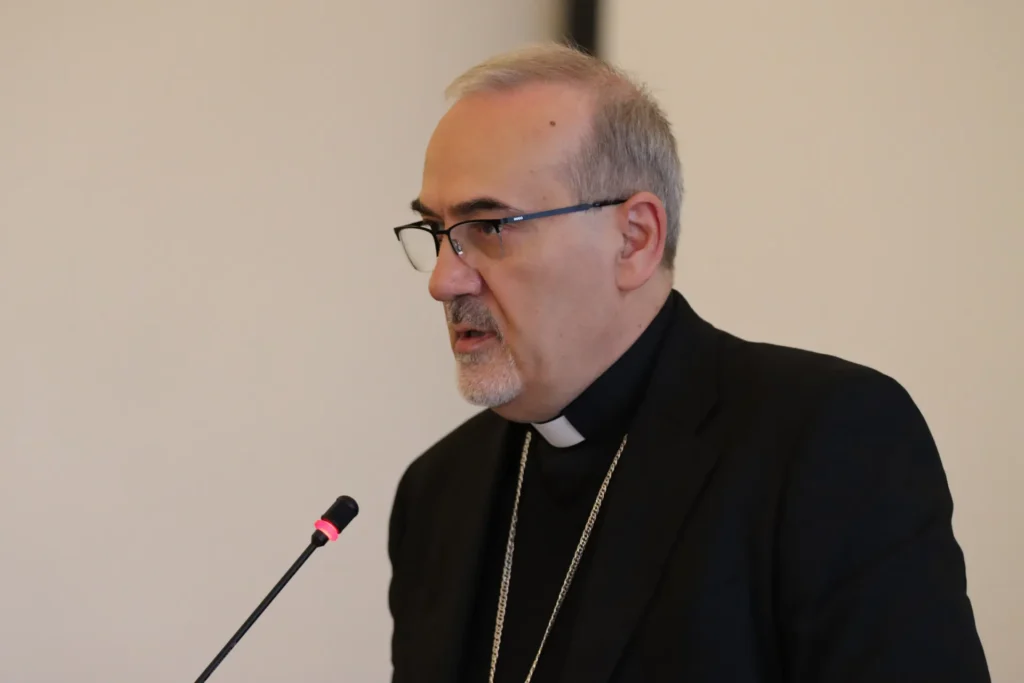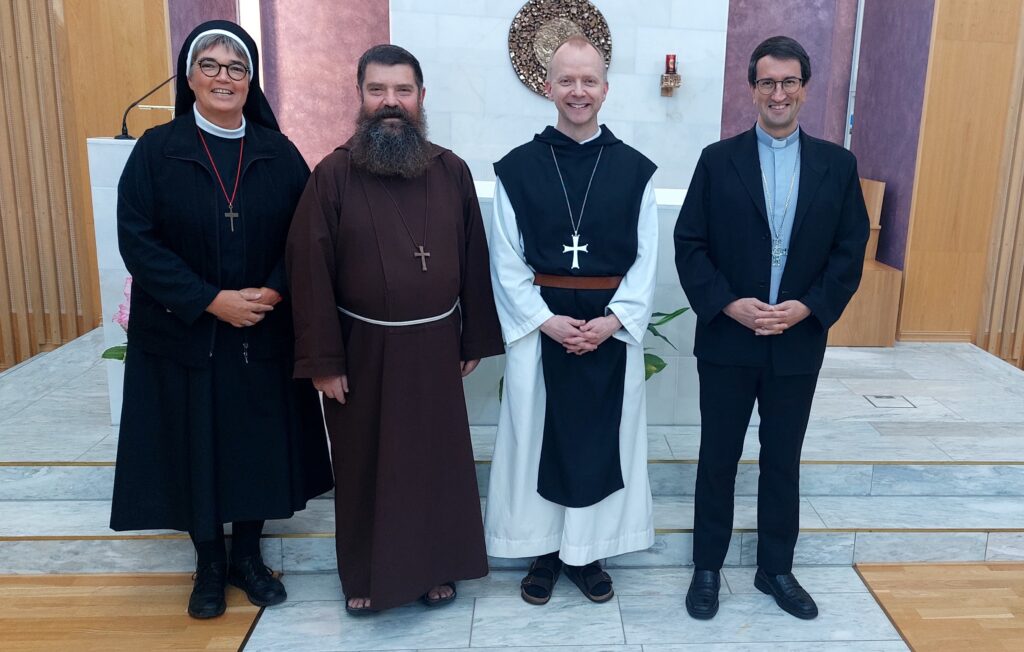By Bénédicte Cedergren
TRONDHEIM, Norway — Also known as the Old Kings’ Road, St. Olav’s Way is one of the northernmost pilgrim trails in the world.
Stretching 400 miles, the medieval pilgrimage route starts in the Norwegian capital of Oslo and heads north along the lake Mjøsa, up the Gudbrandsdal Valley, over the Dovrefjell Mountains, and down the Oppdal and Gauldalen Valleys to end at Nidaros Cathedral, where the medieval king and patron saint of Norway, St. Olav, is believed to be buried.
One of the groups that has been reviving the ancient tradition of pilgrimage to Nidaros Cathedral — nicknamed Cor Norvegiae, the “heart of Norway” — since 2002 is the Norwegian national Catholic youth association Norges Unge Katolikker (NUK).

Two pilgrim groups who wended their way on a 10-day pilgrimage, just completed this week.
Throughout the Middle Ages, Nidaros Cathedral was not only the northernmost but also one of the most important pilgrimage destinations in Europe. Pilgrims from all over Northern Europe would walk hundreds of miles by foot to pray at the grave of the holy king.
Because of its popularity, nine different paths were developed across Norway, Sweden and Denmark over the centuries, all ending at the northernmost medieval cathedral in the world. However, the Old Kings’ Road through the Gudbrandsdal remained the most popular.
The name “Old Kings’ Road” is particularly fitting, as almost every king of Norway traveled this road: Records of their passage range from the first king of Norway through the last king able to pass that way before the road was replaced with a modern railway in 1877.
The list includes St. Olav himself, who is not only buried at the end of road, but who in 1021 and 1024 traveled north using the route that was eventually named after him.
While heavy streams of pilgrims would annually make pilgrimages to the shrine of St. Olav during the Middle Ages, the route eventually fell into disuse with time, first because of the Protestant Reformation and then the arrival of the railway. However, it has recently been revived.
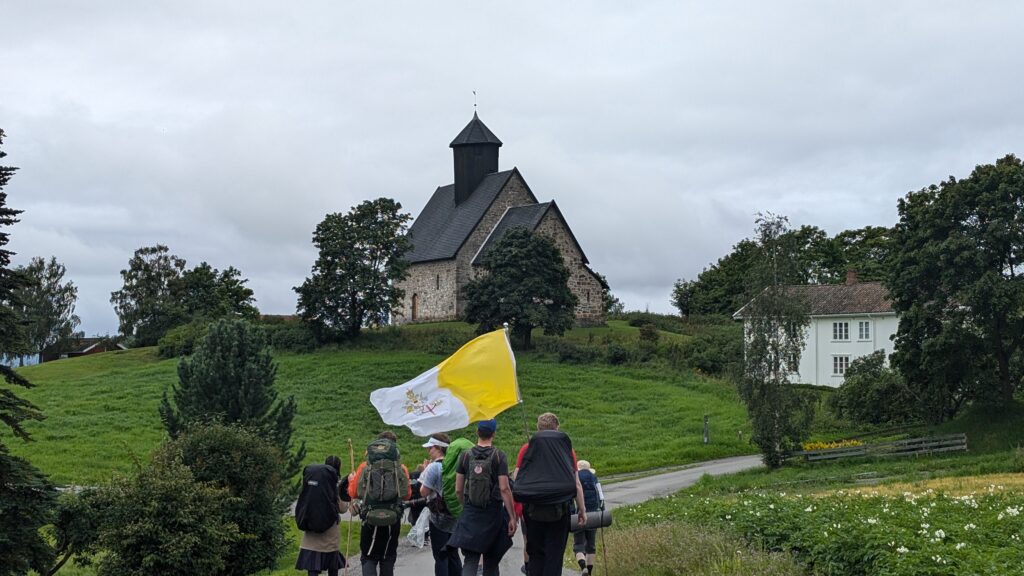
In the Footsteps of St. Olav
NUK is blessed to lead the pilgrimage revival.
“The youth association organizes this pilgrimage every year,” Father Ole-Martin Stamnestrø, who led one of the groups along the Gudbrandsdal path, told the Register, “but you never walk the same part of the route every year. The idea is that if you do this weeklong pilgrimage every year, you will eventually have walked the full distance between Oslo and Trondheim.”
Each year, a group of about 50 Norwegian young Catholics sign up for the pilgrimage. They can choose whether they want to walk through the route’s southern valleys or further north over the mountains towards the grave of St. Olav.
“I walked over the Dovrefjell Mountains 14 years ago,” Stamnestrø recalled, “but this year I walked further south through the Norwegian regions of Ringerike, Hadeland and Toten. It is a very beautiful agricultural landscape commonly known as “Norway’s Tuscany.”
The entire Gudbrandsdal path is not only renowned for its beauty but also for its rich history. For instance, its central valley — the Gudbrandsdal valley — is known as the old home of powerful chieftains such as Dale-Gudbrand, whom St. Olav’s famously converted to Christianity in 1021.
“Symbolically,” the Norwegian priest added, “we began our pilgrimage in Bønsnes in the Ringerike-region, near Tyrifjorden, where tradition holds that St. Olav was born and grew up.”
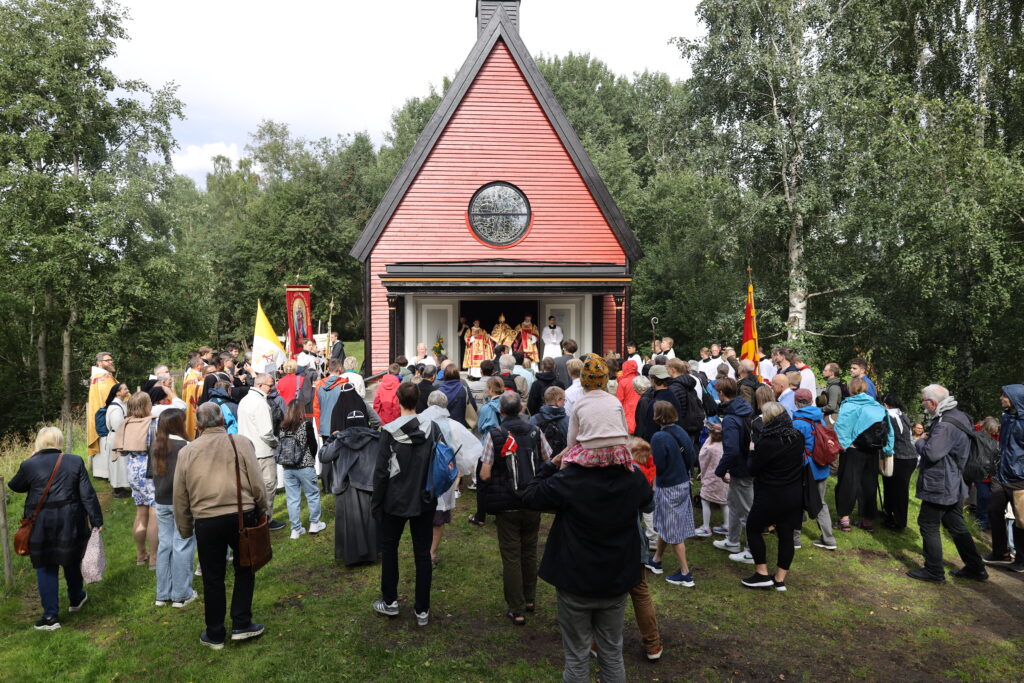
An Intense Pilgrimage
“We would start our days with Lauds at 7 a.m.,” Marie Foss, 21, from Oslo, told the Register. “We had a quick breakfast, and then we were on our way. Pater Ole-Martin always sent us off with a blessing. We then sang a litany to St. Olav, after which Deacon Mathias Ledum led a Rosary.”
The group then made a Holy Hour in silence. The pilgrims had been encouraged to ask their friends and family for prayer intentions, which they brought along on the weeklong pilgrimage.
“A pilgrimage is always physically challenging because you are both walking a lot and carrying a lot,” Foss explained. “But it is never just challenging. You always have community around you, supporting and helping you, and the presence of a priest.”
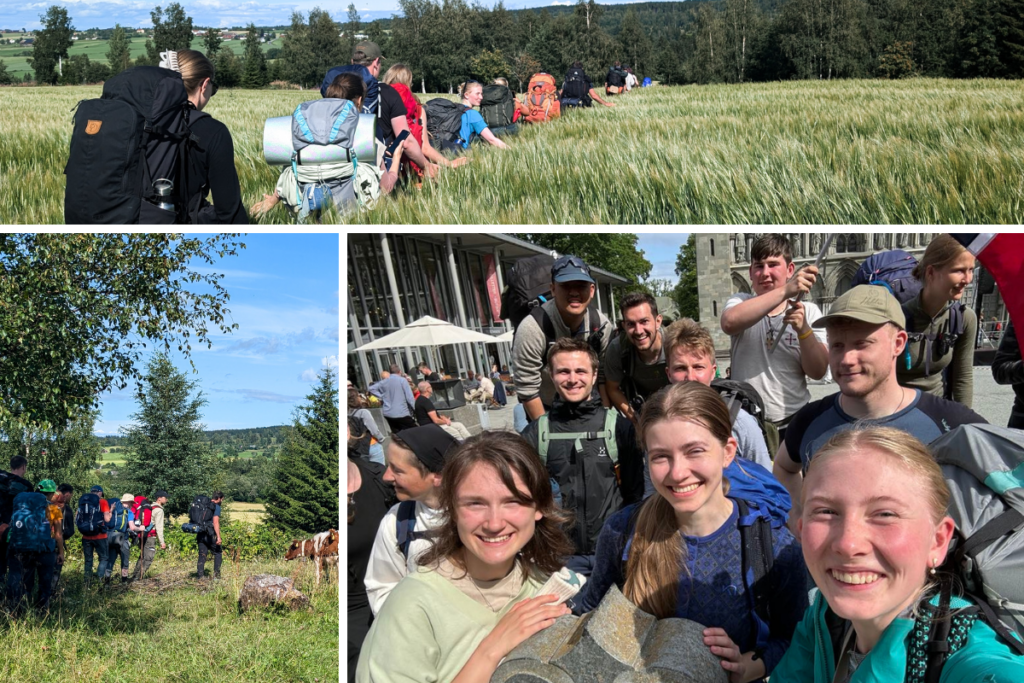
Also Simon Johansen, 21, from Harstad, explained to the Register that “it can be a very difficult pilgrimage for those who are not used to it. Even if you have good shoes, your feet eventually start hurting a lot and your skin to blister.”
“I did not expect the intensity of the pilgrimage,” Johansen, who did the pilgrimage with NUK for the first time this year, continued, “as I have never walked this much before. I have done day hikes, but always come home to my own bed and shower.”
Luckily, Johansen added, a car accompanied the group in case of accidents, injuries or exhaustion. “No one,” he said, “would be left behind.”
Christian Love in Action
Upon arrival at their daily destinations, the group would celebrate Holy Mass in the village’s medieval church. Beyond the beautiful community that was formed over the week, both Foss and Johansen argued that the most beautiful part of the pilgrimage were the daily Masses.
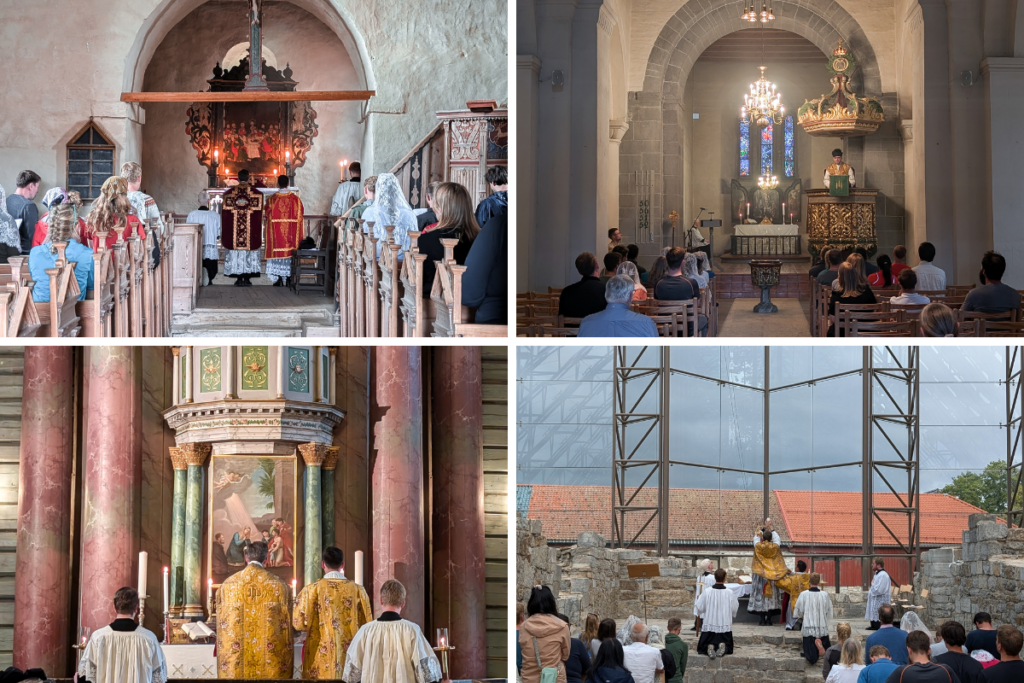
“Pater Ole-Martin always made sure that we had beautiful liturgies,” Foss shared. “It was also moving to see how, even though everyone was so tired, we all came together to organize beautiful Masses. We even formed a little schola to sing for the Masses.”
“On one occasion,” Johansen added, “we even had Mass outside on a medieval altar that had survived the test of time.”
Reflecting on the opportunity to celebrate Holy Mass in medieval churches along the route, which today belong to the Norwegian Lutheran Church but that “were once ours,” Father Stamnestrø shared that, “because the churches were once all Catholic, it felt like home.”
The Norwegian priest also added: “For me, the most beautiful moments happened in the confessional. I got to hear a lot of beautiful confessions and participate in many profound existential conversations with young men and women in search for God.”
“It was beautiful to see so many young people taking their faith so seriously,” he explained, “and it was truly a privilege being able to accompany them during their pilgrimage.”
“It was also extremely edifying to see the group, despite the physical exertion, come together so harmoniously. They saw each other, helped each other and walked with each other. It was Christian love in action.”
Pilgrims Towards Heaven
“Walking on the old route and passing all these medieval churches, in some of which the original floors were even preserved,” Foss explained, “really reminded us that we were walking in the footsteps of the early pilgrims and made us reflect on the meaning of being pilgrims.”
As Deacon Ledum reminded the group, Johansen recalled, “we are all pilgrims on earth, not only journeying to Trondheim, but also to heaven.” And the group, he added, through prayers, Masses and living their common faith, can help each other towards that goal.
“I knew a few of the other pilgrims beforehand but have made new friends during this pilgrimage,” Johansen continued, “which makes one feel less alone, especially since there are so few Catholics in Norway. It’s a great reminder that to be Catholic means to not be alone.”
After walking for a week, the two groups — the one that had walked over the Dovrefjell Mountains and the one that had walked further south on the Gudbrandsdal path — arrived in Trondheim on Saturday, July 27. As he does every year, Bishop Erik Varden of Trondheim walked the last bit of the route together with the pilgrims.
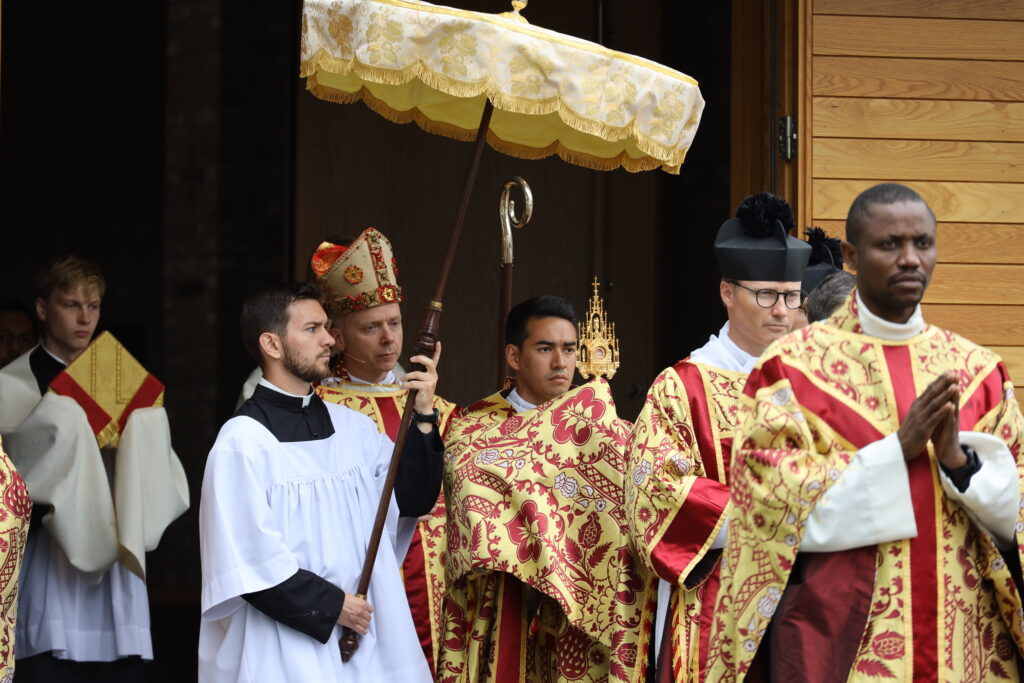
The next day, the pilgrims visited Stiklestad, where the Norwegian king was martyred on July 29, 1030. The following day, a solemn Mass was celebrated in Nidaros Cathedral, for the feast of the Norwegian patron saint, known in Norway as “Olsok.”
Reflecting on the symbolism of starting their pilgrimage near St. Olav’s place of birth and ending at his burial place, Foss commented: “Our journey was a sort of reflection on his life. St. Olav wasn’t your common saint. He was a Viking who converted, who was on fire for Christ and wanted to christen and unite Norway. He became a saint in his martyrdom.”
“As we spend time in silence and reflection, we are reminded of our sinfulness,” Foss said. “But as we walk along a route adorned with ancient churches where Christian faithful have walked and prayed before us — such as St. Olav — we are also reminded that we too can become saints.”
Rediscovering Norwegian Christian Roots
“We were a Catholic country for many hundreds of years,” Father Stamnestrø explained, “and it is important for us all to rediscover our Catholic roots.”
“Most Norwegian Catholics have a least one parent from a foreign country. It is crucial however to recognize that Catholicism isn’t only Polish, Filipino or Spanish. It’s also Norwegian. So, it’s important to realize that there is no contradiction between being Norwegian and being Catholic.”
“I really think the pilgrimage can help those who journey along it to encounter the Christian faith,” Johansen added. “There is something about being far from society, walking in silence and having time to think about life that is conducive to focusing our attention on God.”
Beyond helping the pilgrims reconnect with their Christian roots, Foss also emphasized that “the pilgrimage helps us to revive the joy of being pilgrims. Seeing what St. Olav did and his martyrdom, it also really encourages us to do the pilgrimage again and again, to strengthen our faith and help christen Norway again.”
This articel was first published in The National Catholic Register, EWTN Norway’s news partner.

